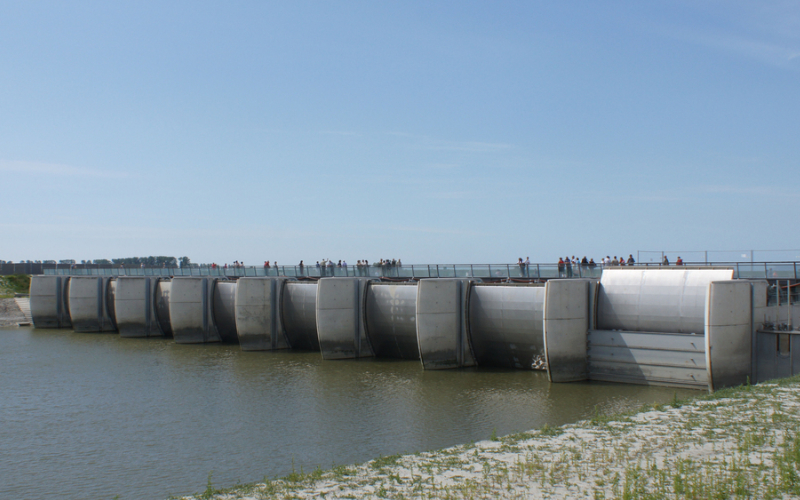Back | Blog posts overview
Sluice gates brave the shifting tides
10/01/2023
Sluice gates are movable barriers that regulate water levels and flow rates in waterways. In a world of changing climates and increased flooding risk, these gates need to be taller and stronger than ever before. Thanks to their strength and corrosion resistance, molybdenum-containing duplex stainless steels are the ideal construction material.

© Nicolas Janberg (Structurae)
Sluice gates are movable barriers that regulate water levels and flow rates in waterways. In a world of changing climates and increased flooding risk, these gates need to be taller and stronger than ever before. Thanks to their strength and corrosion resistance, molybdenum-containing duplex stainless steels are the ideal construction material.
Traditionally made of wood or metal, sluice gates make life possible in the world’s most populous places: along rivers or coastal regions, which are often vulnerable to flooding. The basic technology behind sluice gates is ancient- Sri Lankan society used them over 4000 years ago- but their refinement continues today. Some modern sluice gates use duplex stainless steel, which offers substantial benefits over other construction materials. The sluice gates at Mon St-Michel in Avranches, Slusssen in Stockholm and the Garda Damme in Gothnburg showcase how these gates conserve material, capital, and emissions throughout their service lives.
Discover more about these projects.
Back | Blog posts overview

